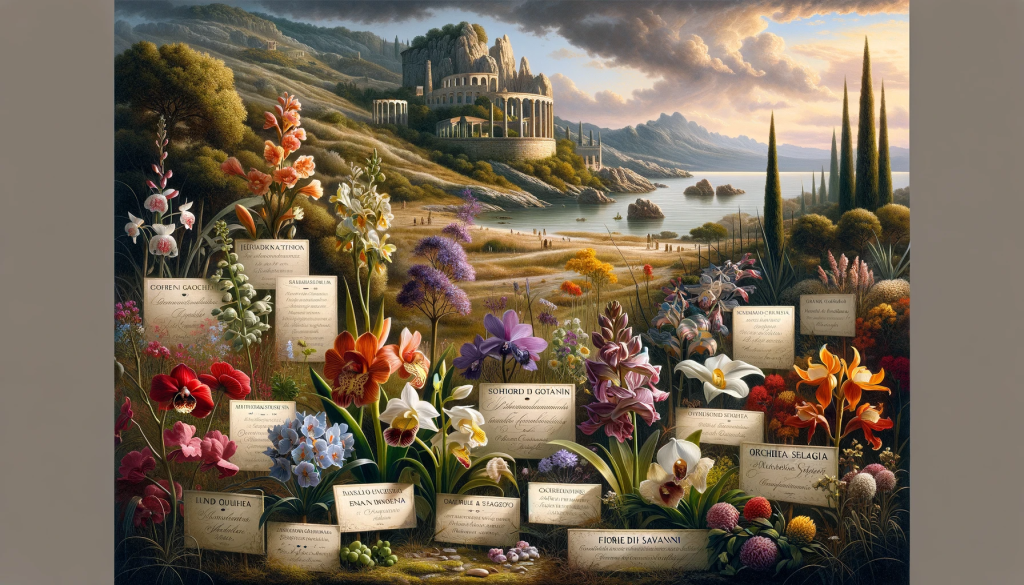Unraveling the Language of Blooms: Sardinian Flowers and Their MeaningsUnraveling the Language of Blooms: Sardinian Flowers and Their Meanings
In the heart of the Mediterranean lies Sardinia, an island where flowers are not just a feast for the eyes but a rich tapestry of cultural symbolism. “Sardinian flowers and their meanings” hold a special place in the traditions and daily life of the islanders, weaving stories and sentiments into their vibrant petals. This article explores the captivating world of these blooms, uncovering the unique language of flowers deeply rooted in Sardinia’s rich culture.

Introduction
Sardinia, with its diverse landscapes and historical depth, is home to an array of unique flowers, each carrying its own story and symbolism. Understanding “Sardinian flowers and their meanings” offers a window into the island’s soul, where nature and culture intertwine beautifully.
The Cultural Importance of Flowers in Sardinia
Flowers in Sardinia are more than mere decorations; they are symbols of life, celebration, and tradition. They play a vital role in local folklore, embodying various sentiments and beliefs, and are an integral part of many Sardinian festivals and ceremonies.
Exploring Common Sardinian Flowers and Their Meanings
Some commonly found flowers in Sardinia and their associated meanings include:
- Myrtle (Myrtus communis): A symbol of love and immortality, myrtle is often used in wedding bouquets and ceremonies.
- Arbutus (Arbutus unedo): Known for its striking red berries, the arbutus represents good fortune and prosperity.
Floral Symbolism in Sardinian Festivals and Ceremonies
Flowers take center stage in many Sardinian festivals. For instance, during the ‘Festa di Sant’Efisio,’ streets are adorned with lavish floral displays, each type of flower adding its own meaning and beauty to the celebration.
The Language of Flowers in Sardinian Art and Literature
In Sardinian art and literature, flowers are often used to convey emotions and stories. Poets and artists have long been inspired by the island’s flora, incorporating them into their works as symbols of love, grief, and celebration.
Gardening and Cultivation of Symbolic Sardinian Flowers
For those interested in cultivating these meaningful blooms, understanding the climate and soil conditions of Sardinia is key. Many of these flowers thrive in the Mediterranean climate and can be grown in similar conditions elsewhere.
Photographing Sardinian Flowers: Capturing Their Essence
Capturing the beauty and symbolism of Sardinian flowers through photography requires an eye for detail and an understanding of their cultural context. Close-up shots that capture the texture and color of the petals, along with their natural setting, can convey their deeper meanings.
Conservation Efforts for Sardinia’s Native Flora
Conservation efforts are crucial to protect Sardinia’s native flora, especially those species that are endemic and carry significant cultural value. These efforts include habitat preservation and public education on the importance of floral biodiversity.
Experiencing Floral Symbolism Firsthand: A Visitor’s Guide
Visitors to Sardinia can immerse themselves in the island’s floral culture by visiting botanical gardens, participating in local festivals, and taking guided nature walks that focus on the significance of native flowers.
Conclusion
The “Sardinian flowers and their meanings” are a testament to the island’s rich cultural heritage and its deep connection with nature. Exploring this floral language not only enhances the appreciation of Sardinia’s natural beauty but also offers insight into the island’s soul. Whether you’re a nature lover, a cultural enthusiast, or a gardener, the flowers of Sardinia invite you to explore and cherish their timeless stories and meanings.